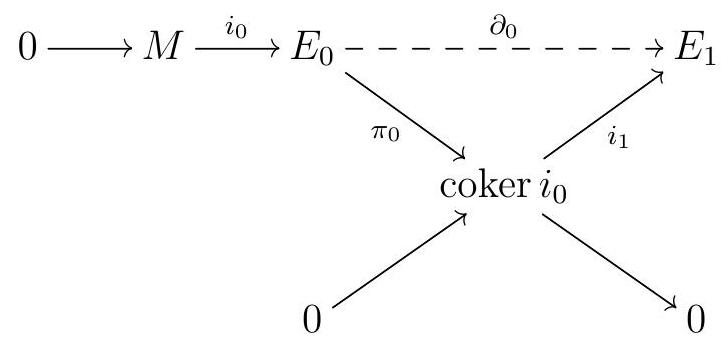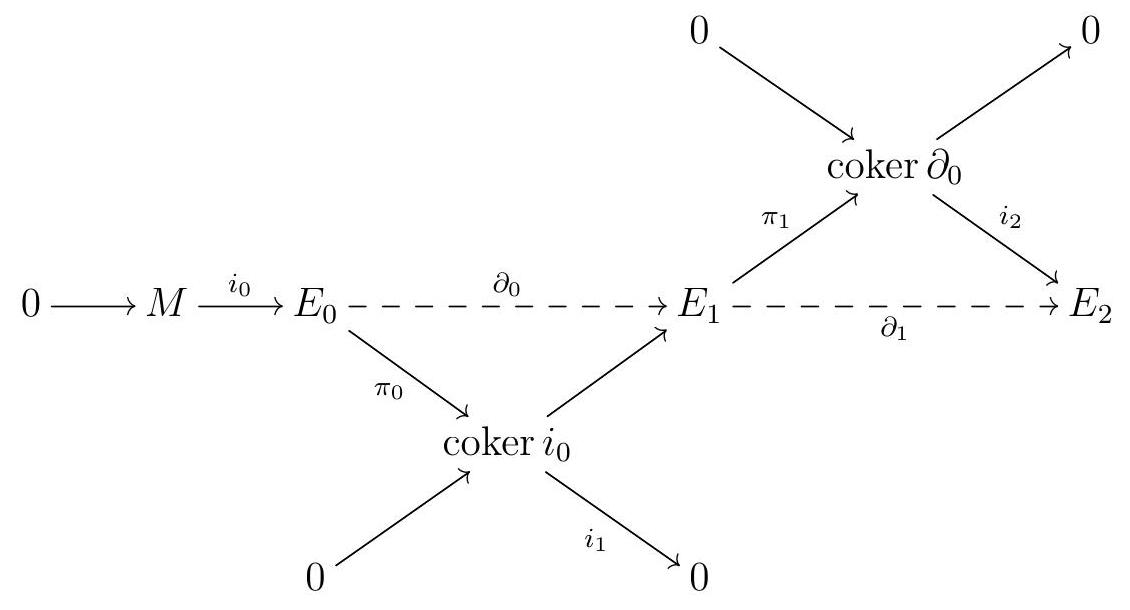Skip to main content Contents Prev Up Next \(\def\ann{\operatorname{ann}}
\newcommand{\Ass}{\operatorname{Ass}}
\def\Aut{\operatorname{Aut}}
\def\can{{\mathrm {can}}}
\def\char{\operatorname{char}}
\def\cp{\operatorname{CharPoly}}
\def\codim{\operatorname{codim}}
\def\coker{\operatorname{coker}}
\DeclareMathOperator*{\colim}{colim}
\def\cont{\operatorname{cont}}
\def\diam{\operatorname{diam}}
\def\dm{\operatorname{dim}}
\DeclareMathOperator{\edim}{embdim}
\def\End{\operatorname{End}}
\def\eval{\operatorname{eval}}
\def\Ext{\operatorname{Ext}}
\def\Frac{\operatorname{Frac}}
\def\Fun{\operatorname{Fun}}
\def\Gal{\operatorname{Gal}}
\def\gcd{\operatorname{gcd}}
\newcommand{\GL}{\operatorname{GL}}
\newcommand{\ht}{\operatorname{height}}
\def\Hom{\operatorname{Hom}}
\def\id{\operatorname{id}}
\def\im{\operatorname{im}}
\def\Inn{\operatorname{Inn}}
\def\ker{\operatorname{ker}}
\def\lcm{\operatorname{lcm}}
\def\Mat{\operatorname{Mat}}
\newcommand{\Min}{\operatorname{Min}}
\def\mp{\operatorname{MinPoly}}
\def\mSpec{\operatorname{mSpec}}
\def\MSpec{\operatorname{MSpec}}
\def\null{\operatorname{Nul}}
\DeclareMathOperator{\ns}{nullspace}
\newcommand{\opp}{\operatorname{opp}}
\def\Orb{\operatorname{Orb}}
\def\Out{\operatorname{Out}}
\def\Perm{\operatorname{Perm}}
\def\ptstab{\operatorname{PtStab}}
\def\rad{\operatorname{rad}}
\DeclareMathOperator{\range}{range}
\def\rank{\operatorname{rank}}
\def\res{\operatorname{res}}
\def\setstab{\operatorname{SetStab}}
\def\sign{{\operatorname{sign}}}
\newcommand{\SL}{\operatorname{SL}}
\def\Span{\operatorname{Span}}
\def\Spec{\operatorname{Spec}}
\def\Stab{\operatorname{Stab}}
\DeclareMathOperator{\Supp}{Supp}
\def\Syl{\operatorname{Syl}}
\def\Tor{\operatorname{Tor}}
\def\trace{\operatorname{trace}}
\def\uSpec{\operatorname{\underline{Spec}}}
\newcommand{\Ob}{\mathrm{Ob}}
\newcommand{\Set}{\mathbf{Set}}
\newcommand{\Grp}{\mathbf{Grp}}
\newcommand{\Ab}{\mathbf{Ab}}
\newcommand{\Sgrp}{\mathbf{Sgrp}}
\newcommand{\Ring}{\mathbf{Ring}}
\newcommand{\Fld}{\mathbf{Fld}}
\newcommand{\cRing}{\mathbf{cRing}}
\newcommand{\Mod}{-\mathbf{Mod}}
\newcommand{\mod}{-\mathbf{mod}}
\newcommand{\Cx}[1]{#1-\mathbf{Comp}}
\newcommand{\vs}[1]{#1-\mathbf{vect}}
\newcommand{\Vs}[1]{#1-\mathbf{Vect}}
\newcommand{\vsp}[1]{#1-\mathbf{vect}^+}
\newcommand{\Top}{\mathbf{Top}}
\newcommand{\Setp}{\mathbf{Set}_*}
\newcommand{\Alg}[1]{#1-\mathbf{Alg}}
\newcommand{\cAlg}[1]{#1-\mathbf{cAlg}}
\newcommand{\PO}{\mathbf{PO}}
\newcommand{\Cont}{\mathrm{Cont}}
\newcommand{\MaT}[1]{\mathbf{Mat}_{#1}}
\newcommand{\Rep}[2]{\mathbf{Rep}_{#1}(#2)}
\def\l{\lambda}
\def\lx{\lambda_x}
\newcommand{\a}{\alpha}
\def\b{\beta}
\def\d{\delta}
\def\e{\varepsilon}
\def\g{\gamma}
\def\t{\theta}
\def\s{\sigma}
\def\z{\zeta}
\def\vp{\varphi}
\newcommand{\A}{\mathbb{A}}
\newcommand{\B}{\mathbb{B}}
\newcommand{\C}{\mathbb{C}}
\newcommand{\D}{\mathbb{D}}
\newcommand{\E}{\mathbb{E}}
\newcommand{\F}{\mathbb{F}}
\newcommand{\G}{\mathbb{G}}
\newcommand{\H}{\mathbb{H}}
\newcommand{\I}{\mathbb{I}}
\newcommand{\J}{\mathbb{J}}
\newcommand{\K}{\mathbb{K}}
\newcommand{\L}{\mathbb{L}}
\newcommand{\M}{\mathbb{M}}
\newcommand{\N}{\mathbb{N}}
\newcommand{\O}{\mathbb{O}}
\newcommand{\P}{\mathbb{P}}
\newcommand{\Q}{\mathbb{Q}}
\newcommand{\R}{\mathbb{R}}
\newcommand{\S}{\mathbb{S}}
\newcommand{\T}{\mathbb{T}}
\newcommand{\U}{\mathbb{U}}
\newcommand{\V}{\mathbb{V}}
\newcommand{\W}{\mathbb{W}}
\newcommand{\X}{\mathbb{X}}
\newcommand{\Y}{\mathbb{Y}}
\newcommand{\Z}{\mathbb{Z}}
\newcommand{\ON}{\mathbb{ON}}
\def\cA{\mathcal A}
\def\cB{\mathcal B}
\def\cC{\mathcal C}
\def\cD{\mathcal D}
\def\cE{\mathcal E}
\def\cF{\mathcal F}
\def\cG{\mathcal G}
\def\cH{\mathcal H}
\def\cI{\mathcal I}
\def\cJ{\mathcal J}
\def\cK{\mathcal K}
\def\cL{\mathcal L}
\def\cM{\mathcal M}
\def\cN{\mathcal N}
\def\cO{\mathcal O}
\def\cP{\mathcal P}
\def\cQ{\mathcal Q}
\def\cR{\mathcal R}
\def\cS{\mathcal S}
\def\cT{\mathcal T}
\def\cU{\mathcal U}
\def\cV{\mathcal V}
\def\cW{\mathcal W}
\def\cX{\mathcal X}
\def\cY{\mathcal Y}
\def\cZ{\mathcal Z}
\newcommand{\fa}{{\mathfrak a}}
\newcommand{\fb}{{\mathfrak b}}
\newcommand{\fc}{{\mathfrak c}}
\newcommand{\fd}{{\mathfrak d}}
\newcommand{\fe}{{\mathfrak e}}
\newcommand{\fm}{{\mathfrak m}}
\newcommand{\fp}{{\mathfrak p}}
\newcommand{\fq}{{\mathfrak q}}
\newcommand{\fK}{{\mathfrak K}}
\newcommand{\fR}{{\mathfrak R}}
\def\sA{\mathscr A}
\def\sB{\mathscr B}
\def\sC{\mathscr C}
\def\sD{\mathscr D}
\def\sE{\mathscr E}
\def\sF{\mathscr F}
\def\sG{\mathscr G}
\def\sH{\mathscr H}
\def\sI{\mathscr I}
\def\sJ{\mathscr J}
\def\sK{\mathscr K}
\def\sL{\mathscr L}
\def\sM{\mathscr M}
\def\sN{\mathscr N}
\def\sO{\mathscr O}
\def\sP{\mathscr P}
\def\sQ{\mathscr Q}
\def\sR{\mathscr R}
\def\sS{\mathscr S}
\def\sT{\mathscr T}
\def\sU{\mathscr U}
\def\sV{\mathscr V}
\def\sW{\mathscr W}
\def\sX{\mathscr X}
\def\sY{\mathscr Y}
\def\sZ{\mathscr Z}
\def\tS{\tilde{S}}
\def\sdp{\rtimes}
\newcommand{\tensor}{\otimes}
\newcommand{\igen}[1]{\langle #1 \rangle}
\def\nsg{\unlhd}
\def\kval{{k-\mathrm{valued}}}
\def\kalg{{k-\mathrm{alg}}}
\newcommand\GG[2]{\Gal(#1/#2)}
\newcommand{\MF}[3]{\Mat_{#1\times #2}(#3)}
\newcommand{\vectwo}[2]{\begin{bmatrix} #1 \\ #2 \end{bmatrix}}
\newcommand{\vecthree}[3]{\begin{bmatrix} #1 \\ #2 \\ #3\end{bmatrix}}
\def\ob{{\mathfrak{ob}} }
\def\qed{\square}
\def\sse{\subseteq}
\def\ss{\subset}
\def\ssne{\subsetneq}
\def\sm{\setminus}
\def\inv{^{-1}}
\newcommand{\es}{\emptyset}
\newcommand{\Zm}[1]{\Z/({#1})}
\def\ov#1{\overline{#1}}
\def\xdots{x_1, \dots, x_n}
\def\adots{a_1, \dots, a_n}
\def\bdots{b_1, \dots, b_n}
\def\udots{u_1, \dots, u_n}
\newcommand{\leg}[2]{\left(\frac{{#1}}{{#2}}\right)}
\def\th{^{th}}
\def\htpy{\simeq_{\mathrm{htpc}}}
\def\textand{ \, \text{and} \, }
\def\textor{ \, \text{or} \, }
\def\textfor{ \, \text{for} \, }
\def\textfa{ \, \text{for all} \, }
\def\textst{ \, \text{such that} \, }
\def\textin{ \, \text{in} \, }
\def\fg{ \, \text{finitely generated} \, }
\newcommand{\op}{\mathrm{op}}
\newcommand{\xra}[1]{\xrightarrow{#1}}
\newcommand{\xora}[1]{\xtwoheadrightarrow{#1}}
\newcommand{\xira}[1]{\xhookrightarrow{#1}}
\newcommand{\xla}[1]{\xleftarrow{#1}}
\def\lra{\longrightarrow}
\def\into{\hookrightarrow}
\def\onto{\twoheadrightarrow}
\newcommand{\vv}[1]{\mathbf{#1}}
\newcommand{\lm}[2]{{#1}\,\l + {#2}\,\mu}
\renewcommand{\v}{\vv{v}}
\renewcommand{\u}{\vv{u}}
\newcommand{\w}{\vv{w}}
\newcommand{\x}{\vv{x}}
\renewcommand{\k}{\vv{k}}
\newcommand{\0}{\vv{0}}
\newcommand{\1}{\vv{1}}
\newcommand{\vecs}[2]{#1_1,#1_2,\dots,#1_{#2}}
\newcommand{\us}[1][n]{\vecs{\u}{#1}}
\newcommand{\vs}[1][n]{\vecs{\v}{#1}}
\newcommand{\ws}[1][n]{\vecs{\w}{#1}}
\newcommand{\vps}[1][n']{\vecs{\v'}{#1}}
\newcommand{\ls}[1][n]{\vecs{\l}{#1}}
\newcommand{\mus}[1][n]{\vecs{\mu}{#1}}
\newcommand{\lps}[1][n]{\vecs{\l'}{#1}}
\def\td{\tilde{\delta}}
\def\oo{\overline{\omega}}
\def\ctJ{\tilde{\mathcal J}}
\def\tPhi{\tilde{\Phi}}
\def\te{\tilde{e}}
\def\M{\operatorname{M}}
\newcommand{\homotopic}{\simeq}
\newcommand{\homeq}{\cong}
\newcommand{\iso}{\approx}
\newcommand{\dual}{\vee}
\DeclarePairedDelimiter{\abs}{|}{|}
\newcommand{\bv}{{\bar{v}}}
\newcommand{\bu}{{\bar{u}}}
\newcommand{\bw}{{\bar{w}}}
\newcommand{\by}{{\bar{y}}}
\newcommand{\ba}{{\bar{a}}}
\newcommand{\bb}{{\bar{b}}}
\newcommand{\bx}{{\bar{x}}}
\DeclarePairedDelimiterX\setof[2]{\{}{\}}{#1\,|\,#2}
\newcommand{\vx}{\underline{x}}
\renewcommand{mod}[1]{\text{(mod }{#1})}
\newcommand{\Slv}[3]{\sum_{{#2}=1}^{{#3}} {#1}_{{#2}} \v_{{#2}}}
\newcommand{\lt}{<}
\newcommand{\gt}{>}
\newcommand{\amp}{&}
\definecolor{fillinmathshade}{gray}{0.9}
\newcommand{\fillinmath}[1]{\mathchoice{\colorbox{fillinmathshade}{$\displaystyle \phantom{\,#1\,}$}}{\colorbox{fillinmathshade}{$\textstyle \phantom{\,#1\,}$}}{\colorbox{fillinmathshade}{$\scriptstyle \phantom{\,#1\,}$}}{\colorbox{fillinmathshade}{$\scriptscriptstyle\phantom{\,#1\,}$}}}
\)
Section 4.2 Injective Resolutions
Injective resolutions are analogous to projective resolutions, but now we want to approximate our module \(M\) by injectives.
Definition 4.32 . Injective Resolution.
Let \(M\) be an \(R\) -module. An injective resolution of \(M\) is a complex
\begin{equation*}
E=0 \longrightarrow E_{0} \longrightarrow E_{1} \longrightarrow E_{2} \longrightarrow \cdots
\end{equation*}
with \(\mathrm{H}_{0}(E)=M\) and \(\mathrm{H}_{n}(E)=0\) for all \(n \neq 0\text{.}\) We may abuse notation and instead say that an injective resolution of \(M\) is an exact sequence
\begin{equation*}
0 \longrightarrow M \longrightarrow E_{0} \longrightarrow E_{1} \longrightarrow E_{2} \longrightarrow \cdots .
\end{equation*}
We can construct injective resolutions in a similar fashion to how we constructed projective resolutions.
Theorem 4.34 . Every Module has an Injective Resolution.
Every \(R\) -module \(M\) has an injective resolution.
Proof.
By
Theorem 3.32 , every
\(R\) -module embeds into an injective module. So we start by taking an injective
\(R\) -module
\(E_{0}\) containing
\(M\text{,}\) and look at the cokernel of the inclusion:
\begin{equation*}
0 \longrightarrow M \stackrel{i_{0}}{\longrightarrow} E_{0} \stackrel{\pi_{0}}{\longrightarrow} \text { coker } i_{0} \longrightarrow 0 \text {. }
\end{equation*}
Now coker \(i_{0}\) includes in some other injective module \(E_{1}\text{.}\)
Take \(\partial_{0}:=i_{1} \pi_{0}\text{.}\) Since \(i_{1}\) is injective,
\begin{equation*}
\operatorname{ker} \partial_{0}=\operatorname{ker}\left(i_{1} \pi_{0}\right)=\operatorname{ker} \pi_{0}=\operatorname{im} i_{0}
\end{equation*}
Notice also that coker \(i_{0}=\operatorname{im} \partial_{0}=\operatorname{ker}\left(E_{1} \rightarrow \operatorname{coker} \partial_{0}\right)\text{.}\) So we can now we continue in a similar fashion, by finding an injective module \(E_{2}\) that coker \(\partial_{0}\) embeds into.
By construction and since \(i_{2}\) is injective, \(\operatorname{ker} \partial_{1}=\operatorname{im} \partial_{0}\text{,}\) and our complex is exact at \(E_{1}\text{.}\) The process continues analogously.
We can again define a minimal injective resolution for \(M\) as one where at each step we take the smallest injective module that coker \(i_{n}\) embeds into; this is called the injective hull of \(M\text{.}\) Perhaps unsurprisingly, one can show that the minimal injective resolution of a finitely generated module over a local ring is unique up to isomorphism. The analogues to the betti numbers are called Bass numbers , although now there are some major differences. When we construct a minimal free resolution, we have only to count copies of \(R\) in each homological degree, while there are many different building clocks for injective modules - the injective hulls of \(R / P\text{,}\) where \(P\) ranges over the prime ideals in \(R\text{.}\) So for each homological degree \(i\text{,}\) we get one bass number for each prime ideal \(P\text{.}\)
Example 4.35 .
Let’s construct a minimal free resolution for the abelian group
\(\mathbb{Z}\text{.}\) We start by including
\(\mathbb{Z}\) in
\(\mathbb{Q}\text{,}\) and then note that the cokernel
\(\mathbb{Q} / \mathbb{Z}\) is actually injective, by
Theorem 3.27 and
Lemma 3.22 . So
\(\mathbb{Q} / \mathbb{Z}\) embeds in itself, and our resolution stops there. So the short exact sequence
\begin{equation*}
0 \longrightarrow \mathbb{Z} \longrightarrow \mathbb{Q} \longrightarrow \mathbb{Q} / \mathbb{Z} \longrightarrow 0
\end{equation*}
is in fact a minimal injective resolution for \(\mathbb{Z}\text{.}\)


